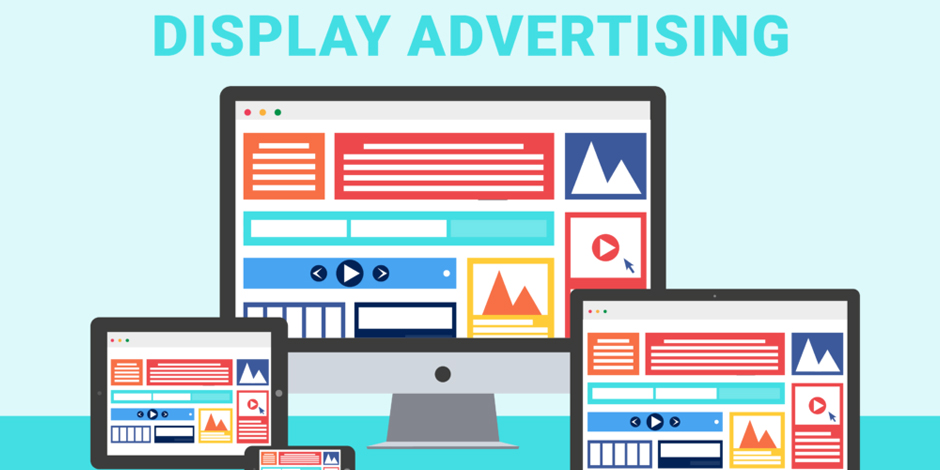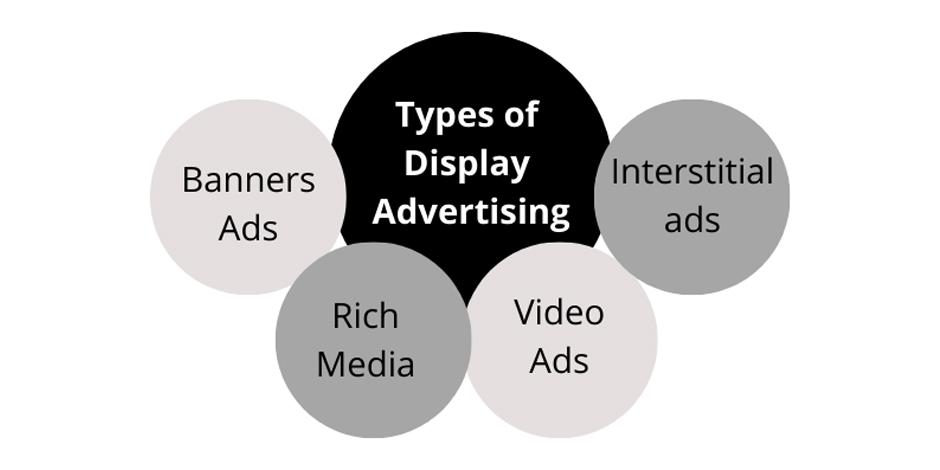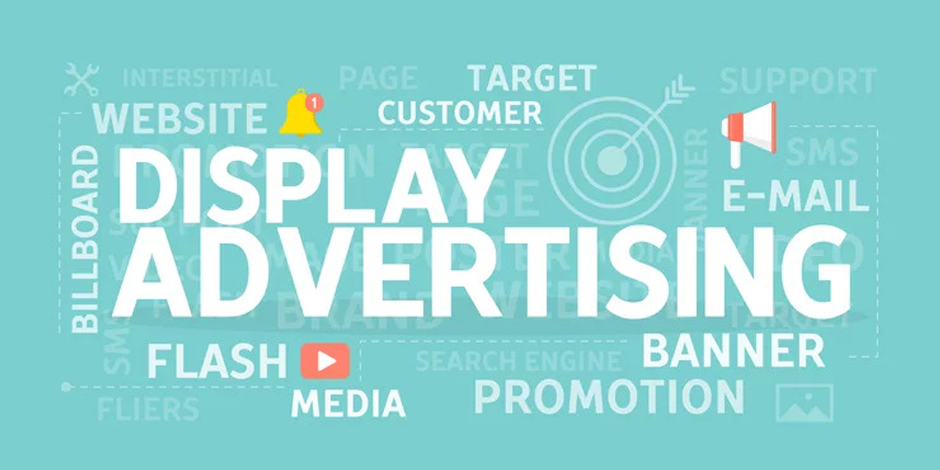Paid media advertising offers a wide range of channels and platforms for marketing teams to promote their brand, products, and services to their target audiences. With so many options available, it can be overwhelming to determine which channel is best suited for your budget.
One channel that Live Web Promotion recommends leveraging is display advertising. Display ads can be used throughout the marketing funnel, including brand awareness, product or service promotion, and display remarketing to previous website visitors.
However, it’s important to begin by establishing clear marketing goals, conducting in-depth research on your target audience, and assessing the costs of the keywords and searches you plan to bid on to attract them, before diving into the bidding process.
Understanding Display Advertising: A Comprehensive Overview
Display advertising refers to a form of digital advertising that involves displaying ads promoting a brand, product, or service on a network of publisher websites using various formats such as images, videos, and text. Depending on the intended purpose of the ad and the device it will be displayed on, these ads can be of different sizes and shapes. We can appear within the content of a webpage, as well as at its top, bottom, or sides.
Advantages of Display Advertising: Exploring the Benefits
When a well-planned display ad strategy is implemented, executed, and continuously improved, it can offer several advantages. With the potential to create visually appealing ads that capture the attention of the intended audience and encourage them to click, display advertising can be utilized throughout various stages of the marketing funnel, ranging from boosting brand visibility and awareness to promoting products or services and retargeting previous website visitors.
The Power of Precise Targeting in Advertising
Marketers can use display advertising to reach specific audiences by selecting from a range of targeting criteria. These may include:
- Age
- Gender
- Location
- Content they consume
- Placements
- Keywords
- Products they’ve viewed
And more
This provides the flexibility to select particular groups of people who will see specific ads, enabling you to narrow down the audience based on specific targeting options. This can significantly enhance the effectiveness of the ads by increasing the likelihood of engagement and conversions.

Enhanced Visibility Quality in Display Advertising
- By utilizing the aforementioned targeting capabilities, you can ensure that your ads are displayed to a high-quality audience. Display advertising platforms provide the option to select the specific outlet or publication on which your ads will be featured, as well as the type of content in which they will be displayed.
- The key benefit of this approach is relevancy. By ensuring that your ads appear on websites that are topically relevant to your target audience, you increase the likelihood of engagement and, depending on the ad’s purpose, boost the conversion rate of your ads.
Creating Brand Awareness through Display Advertising
Display advertising allows you to utilize captivating visuals to showcase your brand in front of relevant audiences, building familiarity with your company name, logo, and other branding elements. This can be achieved by incorporating branded assets into your ads, such as using your company:
- Logo
- Colors
- Taglines
- Messaging
- Videos
- Images
- Products
This can help establish a lasting impression of your brand in the minds of users and associate your company with specific products and services you offer. It is important to ensure that your branded display campaign is high-level, featuring your logo and a brief message that clearly communicates your brand identity and what you have to offer.
Leveraging Display Advertising for Effective Retargeting
Display Ads offers a unique opportunity to retarget and remarket to visitors who may have justify your website without taking any action or may not have returned after their initial visit. By retargeting these users, you can display ads specifically tailored to their previous interactions with your brand and website, increasing the likelihood of them returning to engage or convert. This approach can significantly enhance the effectiveness of your display campaigns and lead to higher conversion rates over time.

Flexible Expenses: Understanding Their Nature
In display advertising, you determine the cost you’re willing to pay for your ad to be shown, and the platform will compare your bid with others for the same ad space. Depending on the winner, your ad will be displayed or not. It’s crucial to research the platform, placement costs, and competition to determine your bidding strategy and budget.
There are two pricing options available for display advertising:
- The most common pricing solution for display advertising is Cost per Click Bidding (CPC), where you pay for each click on your ad.
- Cost per Thousand Impressions Bidding (CPM) charges you based on the number of impressions your ad receives, which is the number of times your ad is displayed to users.
Display Advertising Cost: How Much?
The cost of a display advertising campaign depends on various factors such as the chosen platform, target audience, industry, preferred publications/websites, and targeted keywords. Monitoring the campaign’s performance over time may also lead to additional budgeting considerations.
Distinguishing Between PPC and Display Advertising
Although both forms of online advertising involve pay per click, display advertising and search engine advertising differ in their placement. While search engine PPC ads are displayed in search results, display ads are featured on websites and apps that are relevant to their topic.
Pay-Per-Click (PPC)
Pay per click ads that appear in search results are ranked based on factors such as the bid amount, bidding keywords, landing page quality, and account activity duration. These ads typically appear at the top, bottom, and sides of search engine results pages.
Display Ads
Display advertising refers to paid ads that are displayed on websites, apps, or videos that are relevant to a specific set of keywords. These ads can take the form of text, images, or videos.
What Metrics Are Used to Gauge Success in Display Advertising?
To evaluate the effectiveness of your display advertising campaigns, it’s crucial to monitor performance using relevant metrics based on your campaign goals and its position in the funnel. The following section outlines the metrics to focus on, based on the context in which you employ display advertising.

Top Funnel Metrics
- Time on Site: After successfully bringing visitors to your website through advertising, it’s important to encourage them to spend time engaging with your brand by navigating through your website. Keeping users engaged with your content can help build interest in your brand and increase the likelihood of conversions. It’s crucial to track and analyze the amount of time visitors spend on your site to gauge their level of interest and engagement. This information can help you improve the user experience and content on your website, ultimately leading to more meaningful engagement with your brand.
- New Site Visitors: If you’re looking to attract new visitors and increase brand awareness through display advertising, it’s important to evaluate how many new visitors your ads are bringing to your website. Analyzing the number of new visitors in relation to the impressions your ads are receiving can help you determine if your ad campaign is driving a sufficient amount of new traffic to your site. This information can be useful for optimizing your advertising strategy to better achieve your goals of increasing brand awareness and attracting new visitors.
- Pages Viewed: After landing on your website, it’s important to monitor whether visitors are navigating through the site as intended. Are they following the logical path that you’ve created with internal linking? Are they exploring other pages to gather more information? By keeping track of the number of pages viewed by visitors, you can gain insights into their behavior and ensure that your website is providing a positive user experience.
- Bounce Rate: A high bounce rate is undesirable, especially when you’re investing in website traffic. A high bounce rate indicates that visitors didn’t find what they were looking for and justify the website without taking any further action. To ensure that your audience is engaged and ultimately converts, it’s important to ensure that your ad messaging is aligned with your website content. If visitors are not engaging or converting after clicking through from your ad, it may be an indication that your messaging is off or your website content is not up to par.
Middle of Funnel Metrics
- Attribution: Attribution reporting provides valuable insight into the impact of your display ads on all aspects of your marketing efforts, not just the bottom line. This means that depending on where your ads fall in your marketing funnel and strategy, you need to ensure that they are performing their intended role. For instance, if your goal is to increase brand awareness, you will want to ensure that your ad appears as the First Click in your attribution report. By leveraging attribution reporting, you can optimize your ad strategy and maximize the impact of your marketing efforts.
- Conversion: The concept of conversion refers to whether users who land on your website or navigate through it take a desired action, such as filling out a form or making a purchase. If the goal of your advertisement is to convert, then a high conversion rate is excellent news. However, if users are not converting, it may be necessary to assess the copy or content of your website and consider rewriting it to improve its effectiveness.
- View Through Conversions: View-through conversions refer to instances where users are exposed to an advertisement but do not click on it, yet later convert on your website upon returning. This type of conversion tracking is crucial for obtaining a comprehensive and accurate assessment of each ad’s effectiveness. With view-through conversions, you can gain insight into the impact of your ads on users who may not have clicked initially but eventually converted.
Bottom of Funnel Metrics
- Conversions: It’s crucial to determine if your display ads or remarketing efforts are positively impacting your business’s bottom line by increasing conversions. Are you observing a higher rate of audience conversions since implementing these advertising strategies? This information is particularly important if you’re selling a product or service through your ads.
- Life-Time Value of Customer: Determining the lifetime value of a customer is crucial to understand the net profit generated by a customer who converted from display advertising over their lifetime. By calculating the customer’s ROI over their lifetime, you can evaluate their worth throughout their customer cycle. While there are numerous methods to calculate the lifetime value of a customer, it’s essential to choose a model that aligns with your sales cycle to get the most accurate results.
- ROI: The return on investment (ROI) is the critical metric to evaluate the effectiveness of your marketing campaigns. It’s essential to constantly analyze whether each marketing channel is delivering the expected results, such as driving traffic, conversions, and contributing to the net profit. If a particular channel isn’t meeting the set targets, it’s best to discontinue it. On the other hand, if a channel is performing well, it’s crucial to continue optimizing and refining it to maximize the ROI.





 Content Writing
Content Writing Video Marketing
Video Marketing Graphic Design
Graphic Design Lead Magnet Creation
Lead Magnet Creation Content Marketing
Content Marketing